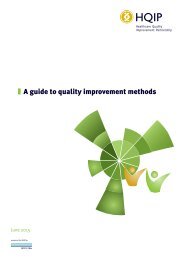2fyY1Py
2fyY1Py
2fyY1Py
Create successful ePaper yourself
Turn your PDF publications into a flip-book with our unique Google optimized e-Paper software.
keyword analysis of social media posts and even analysis of users’ keystroke patterns (79, 111–113). Companies have<br />
used such methods to measure and inform marketers about the level and nature of attention that viewers give to an ad,<br />
combined with extensive demographic and activity data on users derived from their game-console activity (111). They have<br />
also used it to deliver “right-time targeting” in social media (112), i.e. ads that are applicable to users’ thoughts or feelings<br />
at the moment, which has evident application for HFSS foods. Marketers are encouraged to position themselves and the<br />
products they are marketing as the “solution” to consumers’ “pain” (114): for example, within video games, ad timing can<br />
be optimized for moments of heightened emotion, such as when a user experiences frustration at not reaching another<br />
level. As emotion-sensing chips in phones and wearable devices are predicted for the near future (115), the number of<br />
techniques for exploiting moment-by-moment emotions and vulnerability is likely to increase.<br />
With analytics, marketing content and campaigns can be altered, even mid-campaign, in response to consumer reactions.<br />
With “ad placement optimization”, marketers can identify optimal locations and times to target Internet users, and digital<br />
analytics provide real-time ad campaign data, so that advertising content can be adjusted accordingly (116). Extensive,<br />
detailed analytics allow brands, marketers and social media platforms to identify the “reach” of ads and the extent of an<br />
individual user’s attention that an ad is achieving (e.g. number of seconds viewed, extent of commenting and sharing).<br />
Facebook states that its analysis of hundreds of brand campaigns has linked ad attention to ad recall; therefore, Facebook<br />
and Instagram now sell ads on the basis of attention as well as reach (117).<br />
Such techniques are widely used by brands and marketers to target young people, whom they consider a key demographic<br />
group (44). Taken together, the creative tactics and analytics described in this section equate to a brand appointing a<br />
personal marketer to each child, locating and identifying those who are most susceptible to their messages, encouraging<br />
them to send marketing messages to their friends, and following them throughout the day, at moments of happiness,<br />
frustration, hunger and intent, delivering advertising with the maximum impact, and directing them to the nearest place to<br />
buy foods to “fix” their current emotional state. The capacity to target marketing in digital media at the most susceptible<br />
young people is of particular concern, as children’s receptivity to media effects varies according to their disposition,<br />
development and social factors, as accounted for in the model of differential susceptibility to media effects (118, 119).<br />
Individual variation accounts for the relatively small effect sizes often reported in media research, which are often used as<br />
a counter-argument to regulation. Effects are diminished when averaged across entire samples, but sub-groups that are<br />
particularly susceptible can be identified. This is a concern in view of evidence that HFSS marketing is targeted particularly<br />
at certain ethnic and socio-economic groups thought to be more vulnerable to such marketing and whose rates of<br />
overweight and obesity are significantly higher than those of other groups; these include African-American and Hispanic<br />
groups in the USA (120, 121). As digital marketers increasingly identify and target the children who are most susceptible<br />
to HFSS marketing, identify their locations and their emotional states and thus target them when they are at their most<br />
vulnerable, personalized digital marketing is likely to magnify the effects of broadcast advertising and could further magnify<br />
inequalities.<br />
In this emerging, fast-developing area, we raise a note of caution. Neuromarketing, although considered promising, makes<br />
strong claims that may not be supported by the available evidence (122), and there is debate even among social media<br />
platforms and marketers about which metrics are the most meaningful (123). Yet, as the constant development and testing<br />
required to deliver digital marketing unfolds, platforms and marketers work continuously to maximize individually targeted,<br />
highly emotion-focused marketing, and they extract personal information wholesale to do so. This amounts to a vast, realtime,<br />
online experiment in human behaviour, one that is conducted within a “black box” system in which the decisions and<br />
data – unlike broadcast media – are not transparent to users or regulators (82). Scholars have called for the creation of<br />
ethics boards by all companies that manipulate user data, to ensure external oversight of platforms’ algorithmic activities<br />
and “hold companies to account … regardless of whether or not it is couched as research” (124). Although Facebook<br />
announced that it had created an ethics board in 2014 (125), the remit of the board and its lack of transparency fall short of<br />
the widely accepted ethical principles that govern research (126). We are unaware of any major digital platform, marketer<br />
or food company that is transparent about its in-house advertising research or that has addressed the ethics of targeted<br />
marketing to children – whether contextual or personalized.<br />
12






